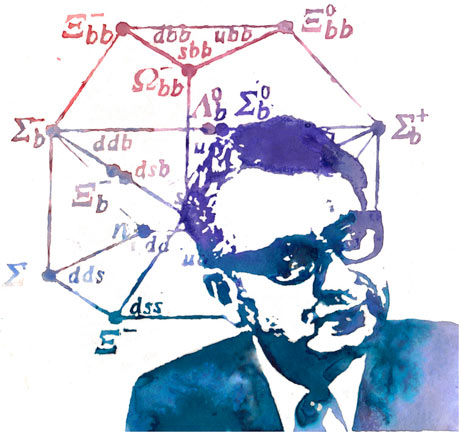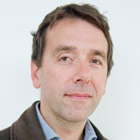Jun. 11, 2011

CTSA resolution passes 147-1 (photo: Tom Fox)
The Catholic Theological Society of America June 10 overwhelmingly passed a resolution recommending the U.S. bishops establish a committee to evaluate procedures that led to their doctrine committee’s April statement, which severely criticized a book by a noted U.S. theologian.
By a vote of 147 to one, the society approved a statement saying it “deeply regrets” the bishops did not follow procedures they established in 1989 aimed at resolving conflicts between bishops and theologians.
It was the first time in recent memory the full theological society passed such a resolution, an indication of its deep displeasure at the way the bishops’ doctrine committee handled an investigation of Fordham University Sister Elizabeth Johnson’s 2007 book, “Quest for the Living God.”
The resolution was put before the full body of the theological society by Jesuit Father Michael J. Buckley who said the bishops need to know the “theological reputation of a theologian” can be threatened by a mishandling of this kind of investigation.
“The Catholic Theological Society of America regrets deeply that the provisions established by the American bishops in the document ‘Doctrinal Responsibilities: Procedures for Promoting Cooperation and Resolving Disputes Between Bishops and Theologians’ were ignored in passing judgment on ‘Quest for the Living God’ by Professor Elizabeth Johnson,” the resolution reads.
Theologians and bishops have wrangled for decades over how best to handle disputes between them. In 1980, working with the bishops, committees of theologians and canon lawyers were formed to assess the question. In 1983 a the “Doctrinal Responsibilities” statement was unanimously approved by both the Catholic Theological Society of America and the Canon Law Society of America. It was then taken up by the by the Bishops’ Committee on Doctrine, sent to the Vatican for input, and eventually formally approved by the National Conference of Catholic Bishops in 1989.
Under the heading “Ecclesial Responsibilities” (which considers the responsibilities and rights of both bishops and theologians) it stated: “It is inevitable that misunderstandings about the teaching of the gospel and the ways of expressing it will arise. In such cases, informal conversation ought to be the first step towards resolution.”
The bishops’ doctrinal committee said it studied Johnson’s book for more than a year before issuing its stinging critique. Admitting it never notified Johnson it was investigating the book, doctrine committee president, Cardinal Donald Wuerl of Washington, explained the book had been published for more than three years when it undertook the study, and that the committed felt an urgency to deal with the book because it was being used widely in colleges and seminaries.
In a statement Johnson issued June 1 she said that had she been invited into dialogue she could have helped the bishops avoid serious misunderstandings and misrepresentations of numerous arguments in the book.
Last April, just weeks after the doctrine committee issued its critique of Johnson’s book, saying it “undermines the gospel” and does not adhere to authentic Catholic doctrine, the board of the Catholic theological society issued a statement defending Johnson, faulting the doctrine committee for not following their 1989 guidelines.
Defending its own handling of the matter, the doctrine committee has stated that the 1989 procedures adopted by the U.S. bishops were aimed at settling disputes between local theologians and bishops, and that the committee had its own directives by members of the U.S. episcopacy.
“We are greatly disturbed that the Doctrine Committee did not follow the approved procedures of [the 1989 U.S. bishops’ conference document] ‘Doctrinal Responsibilities,’ which advocate that an informal conversation be undertaken as a first step,” the CTSA board statement read.
The CTSA statement further charged that the Doctrine Committee’s assessment of Johnson’s book was “deficient” because it misrepresented thinking presented in the book.
The resolution passed June 10 by theological society did not venture into theological matters, recognizing, members said, that differences of opinion on theological matters exist within the body. Instead, it limited itself to criticism of the bishops’ procedures.
 Johnson, second to left, voting for resolution (Photo Jan Jans)
Johnson, second to left, voting for resolution (Photo Jan Jans)
Capuchin Fr. Thomas G. Weinandy, executive director of the doctrine committee, responding to criticisms from theologians and other academic colleagues of Johnson, in a late April letter written to the faculty members at Fordham University said the doctrine committee never intended to tarnish Johnson’s reputation or impugn her honor or dedication to the church. Weinandy’s letter stated the committee “in no way calls into question the dedication, honor, creativity, or service” of Johnson.
He added the committee had written to Johnson reiterating its willingness to enter into dialogue with her and that it might be time to review the 1989 bishops’ document. “Such a review,” he wrote, “might also provide an occasion to see how well its provisions are understood and applied.”
Weinandy was present for the vote of the full body.
NCR could not immediately determine if he voted on the resolution.
What is clear is that both some bishops and theologians appear eager to take another look at the 1989 “Doctrinal Responsibilities” statement.
Fox is NCR Editor


















